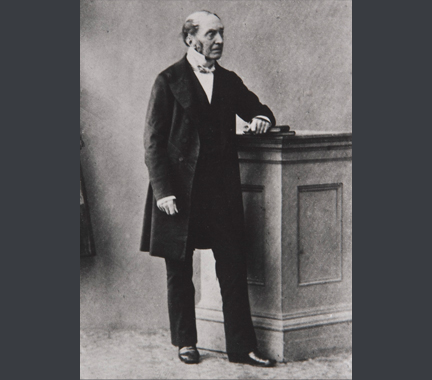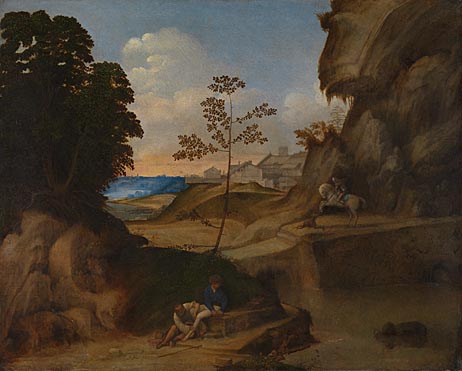It must be said that this supposed air of mystery has been pretty convincingly dissipated under critical examination. Far from relying on century-old techniques, so photo historian Joel Snyder argues, Talbot and Daguerre might better be seen as making their crucial inventions by using chemical preparations that had only been formulated in the mid-1830s. Rather than being surprised that photographic processes were not invented earlier, Snyder quips, "it is something of an astonishment that they were invented as early as they were." However we want to sort out this debate, Batchen's basic claim still merits further consideration. That is, by his account, photography was conceived before it was brought into practice; a desire to fix the images that generations of learned observers had watched in the camera obscura preceded the chemical capacity to materialize those ephemeral effects. And, crucially, that desire materializes only in the years around 1800. "Only at the end of the eighteenth century," Batchen claims, "did speculations of this kind become frequent and widespread." (Burning with Desire, 32)
To explain what drew this desire to photograph into existence, Batchen supplies an array of factors that follow a roughly Foucauldian scheme. Classical knowledge, in this account, saw Nature's profusion as:
... signs of God's mysterious ways, of an order operating beyond the ken of mortal beings. However, at a certain point in history [around 1800] this view of nature, together with the Linnaean tabula rasa, suffered a profound internal crisis. During the period in question, the speculations of European thinkers as diverse as Lamarck and Lyell, Goethe and Erasmus Darwin, Kant and Hegel, Coleridge and Constable, contributed to its complete transformation. From a stable clockwork entity produced by a single act of divine creation, nature came to be seen as an unruly, living, and active organism with a prolonged and continuing history. (Burning with Desire, 59)
So, Batchen claims, in addition to flourishing discourses like the picturesque that confused the natural and the artificial (p. 78) and the shifting nature of the beholder (p. 82-4), the compulsion to fix images inside a camera space emanated from this new dynamism within nature herself. The "dry," mechanical Nature of the Classical age is made, as it were, so "liquid," fluid and fluxing that she needs to be captured by early nineteenth century optico-chemical intervention.
Concluding the second volume of this study, Eastlake offers a scintillating contrast between the Flemish technique of painting in oil with that of the Venetians. Whereas the Flemish painted "alla prima—that is, though the work might be long in the hand, each part was finished as much as possible, and often literally, at once" (Eastlake, Vol. II: 272), the Venetians went contrived a complex system of underpaint and glazing that remained ever open to revision: "No part was finished at once, and, far from desiring to give a glossy surface while the picture was in progress, the contrary was aimed at at till the whole was completed." (Eastlake, Vol. II: 273) Light colored underpainting would then read as a warm tone when seen through an oil film of darker, transparent glaze, while a darker underlayer would appear cool when swimming beneath a lighter colored glaze. The differences in effect and conception are substantial; whereas Flemish painting was made piece-by-piece with colors mixed on the palette and then applied so that the composition came into view more or less as it would ultimately look, the Venetians required a complex sequence of interactions. Eastlake puts it this way: "In the Venetian practice, degrees both of warm and cool tints could be obtained dynamically as opposed to a clayey or atomic mixture of the colours." (Eastlake, Vol. II: 276-7)
More than optical appearance and painterly fact were at stake, though. As Eastlake acknowledged, there was something effeminate and even cowardly in the endless equivocations allowed by the Venetian technique that stood in firm contrast to the "neck or nothing, irrevocable Flemish method [which] is a far more manly and difficult practice." (Eastlake, Vol. II: 274) Indeed, what emerges from Eastlake's account—particularly as he turns to Venetian masters like Giorgione whose Il Tramonto (ca. 1506-10) we see at left—is an emphasis on dynamic tension between a rocky, masculine art of underpainting in vivifying resistance to the oily, lapping, feminine seas floating on top of it. Giorgione, Eastlake writes:
... would at the same time see the danger of the extreme softness and obliteration of form to be apprehended from this treatment, and therefore the necessity of a proportionate boldness and solidity as its basis. Without the substance and ruggedness of the rock, the superadded cloud, still more softened by glazing, would have wanted contrast of texture and truth of imitation. While therefore adopting contrivances which insured the softest transitions, the most perfect roundness, and the largest breadth, it was impossible for a painter of energetic character like Giorgione not to feel that the utmost vigour and apparent contempt of labour were requisite in the earlier stages of a work in order to conceal the delicate operations reserved for its completion. (Eastlake, Vol. II: 279)
Now, Eastlake goes to some truly extreme measures of violence in his language for communicating the requisite tension between layers. The painter must operate by "beating and stabbing" (p. 283), aiming to "kill the cold colour" (p. 284) and to make sure all blue shadows are "neutralized." (p. 285) It is as if only by these extremes of violence that the Venetian method by Eastlake's account could avoid collapsing into an emasculating, liquid softness—an employment, as Michelangelo supposedly claimed, "fit for women and children." (p. 280)
Given the violence of this language, I can't help but think of Jim Elkins's account of painting-as-alchemy, which we read earlier in the term. It seems highly to the point here: "One of the aims of alchemy ... is to make the volatile fixed: to cut the limbs from the lion, or clip the wings from the dragon, or shear the feathers from the phoenix. The alchemists thought of fixation as hobbling, chaining and mutilation." (What Painting Is, 123) While the violence with Eastlake's Venetians is less fixing volatility than keeping it in productive, rigorous motion, the author was surely cognizant of the alchemical operations at work. "So simple a process as this will banish all ideas of the palette [i.e. of the Flemish, "atomic" method]," Eastlake tells us at one point as he invokes alchemy's transmutational aims: "Evident as the brush-work may be, and ought to be, [it] will transform the mere paint into silver and gold." (p. 285-6)
So, masculine and feminine, under-structure and surface, heat and cold, etc. must all be kept in dynamic tension if the Venetian scheme is to work. But, when it does work, the effect is truly marvelous. And the following are the terms by which Eastlake concludes his study:
The production of various degrees of transparency and of the whole range of warm and cool tints by judicious alternations of scumbling and glazing, is a world which may be said to be at the painter's [end p. 295] command. The art of producing such results may be studied at first merely as an art, and without direct reference to nature. The processes in fact are in a degree precisely those of nature, and therefore can never fail to open up a universe of colour unapproachable by any other means. It need not there be dissembled that the dynamic method considered with reference to colour only, involves completeness in itself, and is so far independent of nature as it is an application of nature's own means. But the power and the capabilities of the system being felt, its possible refinements, with all its accidents, and all its assistance from vehicles and from substance—such as the repeated interposition of colourless media (for which the Italian varnish is adapted) and the production of internal sparkle by brilliant colours half ground, or even by the veiled glitter of metallic particles—all these capabilities being felt, with many more aids from that "cunning" which he has acquired at home, the painter goes to Nature and compares her world with his own. He finds that infinite as the Great Artist is, he too has in his possession a miniature scale of processes which, in conjuring up of magical effects, is analogous to those which Nature herself puts into requisition, and he at once selects and delights in the most difficult of those problems in light and colour which the external world presents to him. (p. 295-6)
As I read this passage, Eastlake's Nature overlaps substantially with that which had brought photography into existence according to Batchen. That is, Venetian painting is a dynamic method that creates its values—indeed, its "magic"—through a quasi-alchemical juxtaposition of male and female, dry and liquid, subterranean and superficial elements brought into dynamic tension. Although the Venetian artist can get lost in that world of his artificial making, it turns out that he is already in the world because Nature and her processes are structured like his dynamic painting method. Now, if we recall that Eastlake was centrally involved with both painting and photography ca. 1850—he became President of the Photographic Society in 1853 and the first Director of London's National Gallery in 1855—some interesting questions emerge. Is it too simplistic to say that where the painter's "cunning" had to be used to craft juxtaposition between elements to create a dynamism equivalent to nature, the photographer's intelligence aimed to bring nature's flux to a halt? If Venetian painting had long been likened to Nature, is Eastlake's emphasis on dynamism new to both (as Batchen would have us believe at least for the latter)? And what are we to make of all this talk of alchemy, cunning and magic? Fascinating!



No comments:
Post a Comment